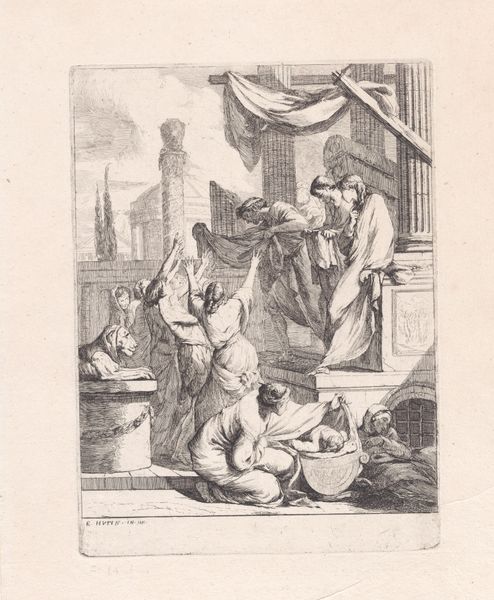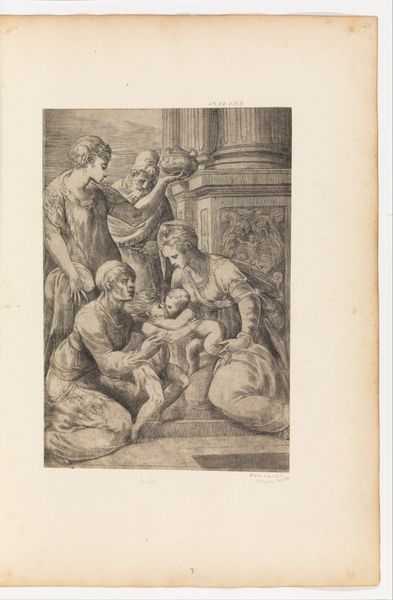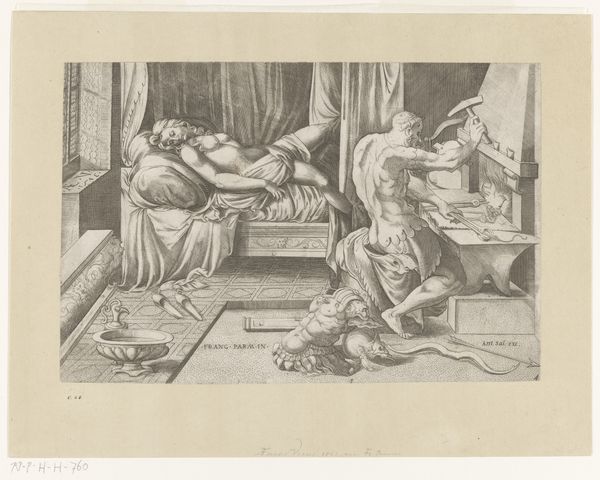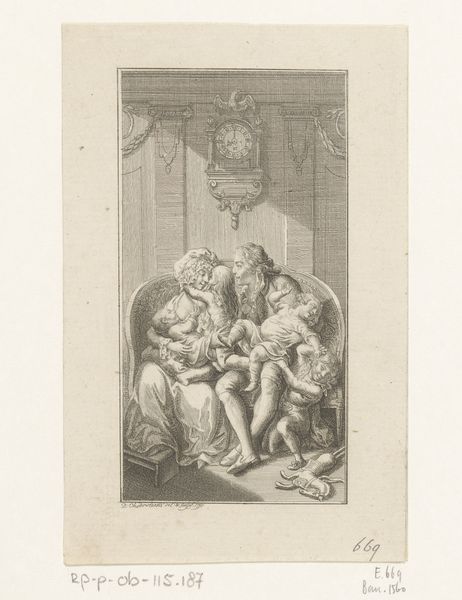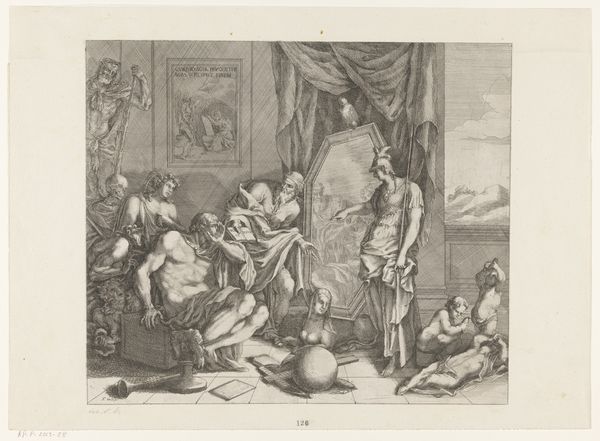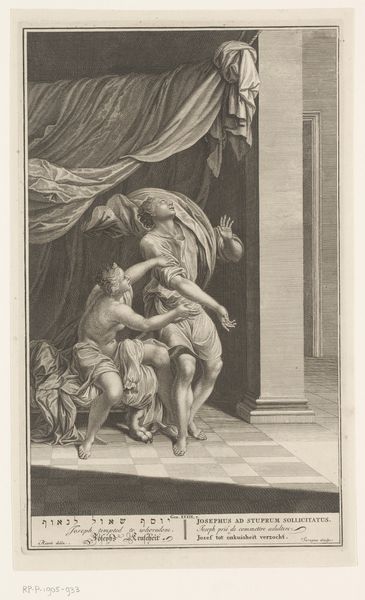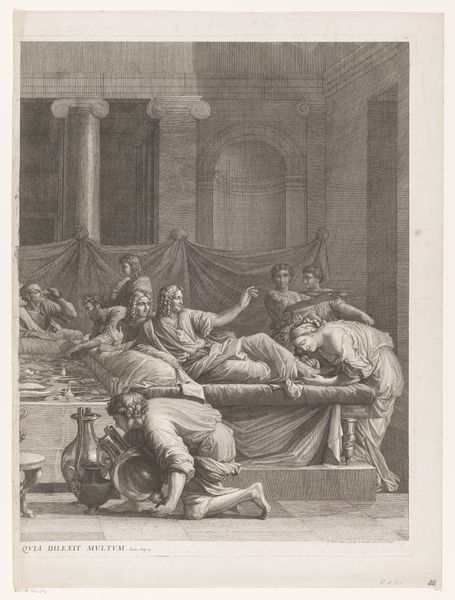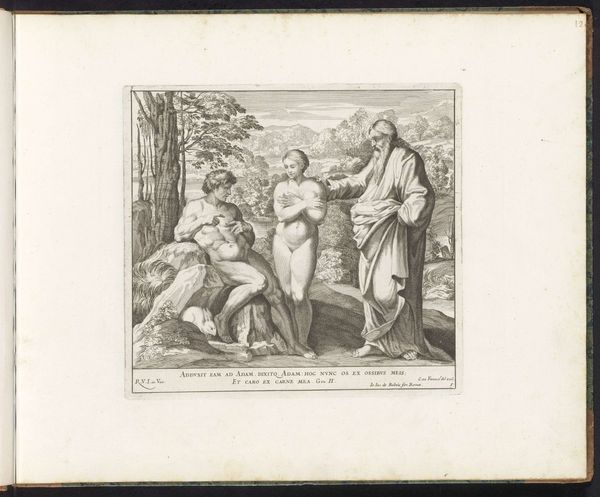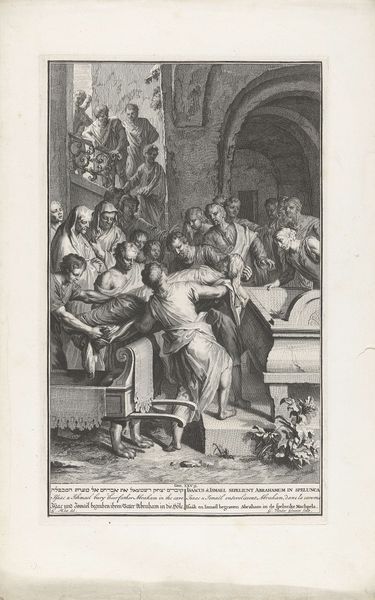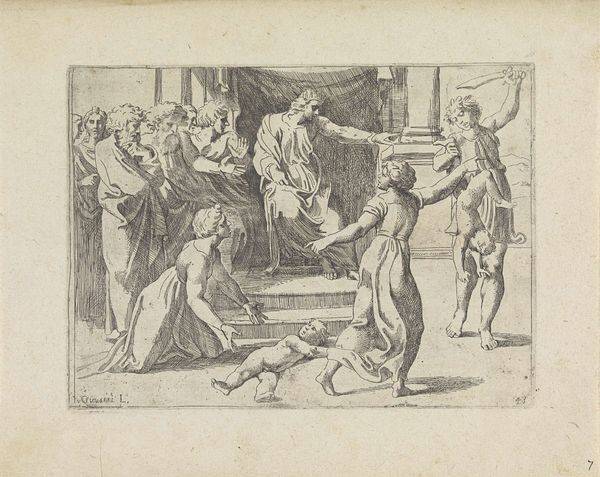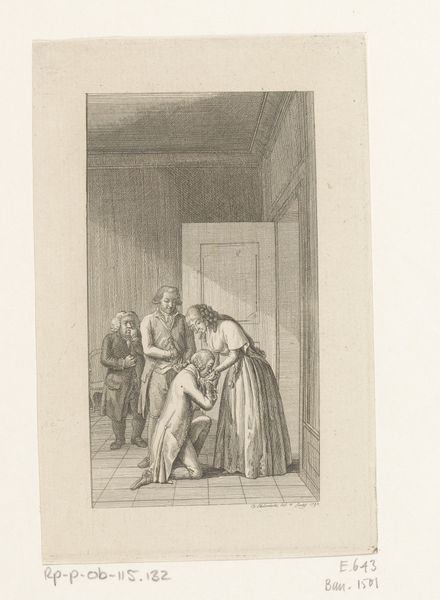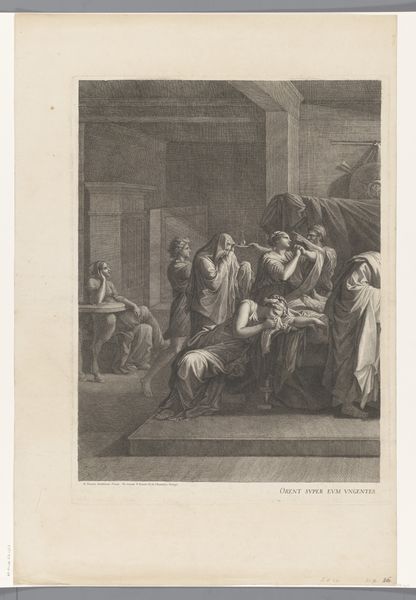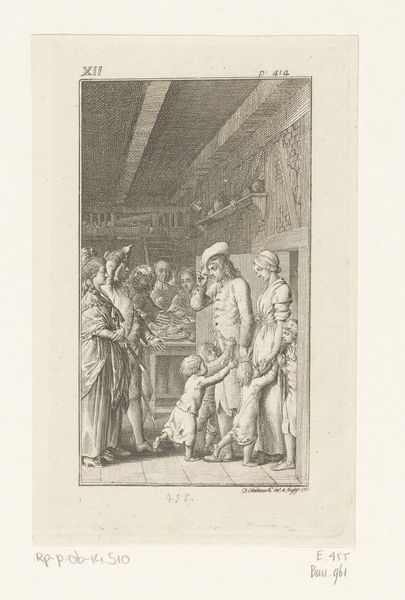
Hertog Adalbert wordt door zijn hofdames het bed in gedwongen 1794
0:00
0:00
print, engraving
# print
#
old engraving style
#
figuration
#
romanticism
#
genre-painting
#
history-painting
#
engraving
Dimensions: height 128 mm, width 76 mm
Copyright: Rijks Museum: Open Domain
Curator: Here we have Daniel Nikolaus Chodowiecki's 1794 engraving, "Hertog Adalbert wordt door zijn hofdames het bed in gedwongen," which translates to "Duke Adalbert Being Forced into Bed by his Ladies-in-Waiting." It's currently held at the Rijksmuseum. Editor: Well, immediately, the image strikes me as chaotic. The scene feels claustrophobic, doesn't it? Like there’s no escape. Curator: Yes, it is a tightly packed composition. Look closely, and you see this domestic space transformed into a site of struggle, literally an enforced domesticity. It seems to play on historical notions of power, gender roles, and the expectations placed on rulers. Adalbert seems quite reluctant to go to bed. Editor: Absolutely. And I'm drawn to the quality of the lines in this print; it is engraving, of course. But the way Chodowiecki utilizes cross-hatching, creating gradients of tone with such dense networks of etched lines is quite intriguing. I wonder about the time it took him to render such an image, the labor that would've gone into creating this plate. Curator: Interesting observation. The visual vocabulary—the swooning poses, the implied narrative— situates the work within the late Romantic era. But even beyond the immediate storyline, I’m intrigued by what forcing him into bed might represent symbolically. Is this merely a playful scene or is it reflective of larger cultural tensions? Editor: Maybe it suggests societal pressures placed on those in positions of power. The fact that the medium is print is not trivial, by the way. This image was probably circulated widely. Think of the networks of consumption and the artist's ability to generate multiple nearly identical works... it allows narratives to take root, even those involving some pretty bizarre themes! Curator: Good point. And the act of printing and dissemination amplifies the symbolism; the scene, once a personal act, is laid bare. These gendered power dynamics became fodder for public consumption and perhaps reinterpretation. It is quite amazing what a simple bedtime scene reveals, isn’t it? Editor: Indeed, a print designed for consumption raises as many questions about production and reception as it does about romanticised narratives.
Comments
No comments
Be the first to comment and join the conversation on the ultimate creative platform.
